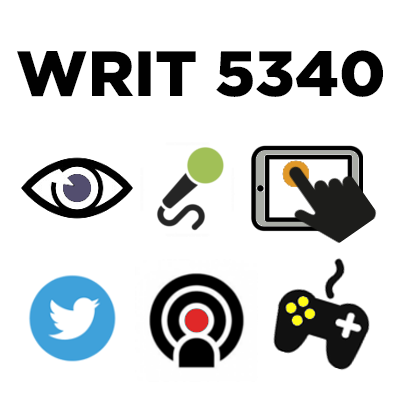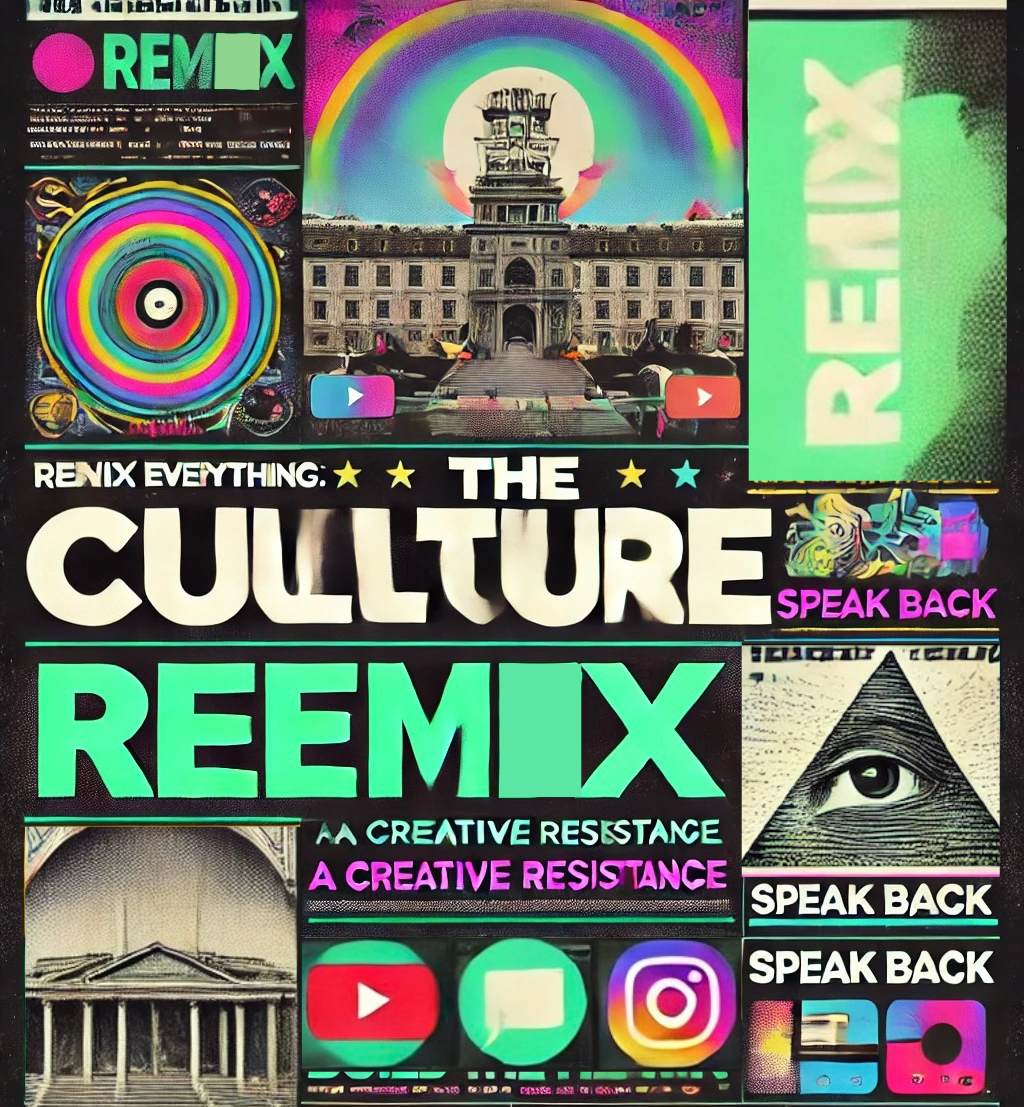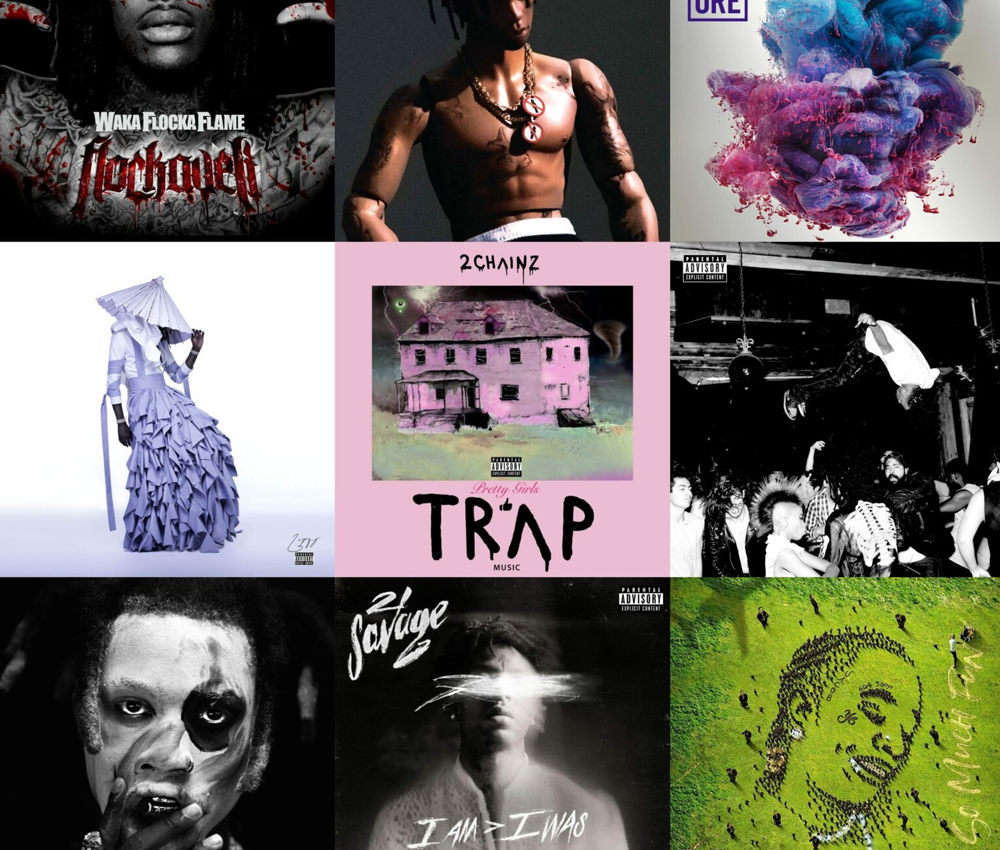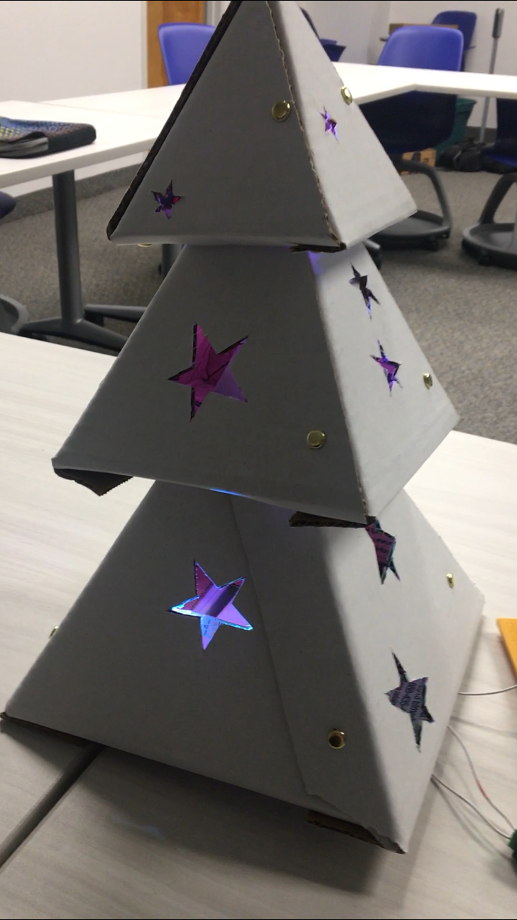
- Maker: Jieun S.
- Genre: Eversion
- Level: Graduate
- Program: Composition, Rhetoric, and Digital Media
- Course: WRIT 5400: Technical Writing
- Instructor: Dr. Eric Mason
- Semester Created: Winter 2020
Description:
This eversion project is for creating a light show that is synchronized to the lyrics of songs, especially those that reference color or specific holiday phrases. Synchronizing music and lights can be a major production that requires predetermined settings and music selections. Modern electronics and programming, however, allow anyone to create a display that can be synchronized in real time with any song. With the correct equipment and a little crafting skill, anyone can create the Christmas tree light display shown here for people to see and enjoy.
Reflection:
How Does It Work
The tree itself is made from cardboard. A base plus three tiers that have cutouts on the bottom (so the top of one can fit into the bottom of the next one up), as well as holes cut around the outside, allow for light to easily travel throughout the display. Light is provided by a string of addressable LEDs (light-emitting diodes). A regular strip of LEDs can be used if the goal is to have the whole strip light up one color at a time, but if patterns, or different simultaneous colors are desired, then an addressable LED strip which has a microchip that independently controls each array of red-greenblue LEDs is needed. Changes in colors and patterns are controlled using the Google Voice Kit 2.0, which uses artificial intelligence to parse spoken language using their cloud-based Speech-to-Text service and translate it into written text that a program written in Python can translate into commands sent using a serial connection to an Arduino board that controls the lights. Phrases were chosen from popular Christmas songs so the tree would change in response to them, but any recognizable words could be used to trigger changes in the display. Words included colors as well as terms like “fire” and “snow” which were used to trigger specific patterns.
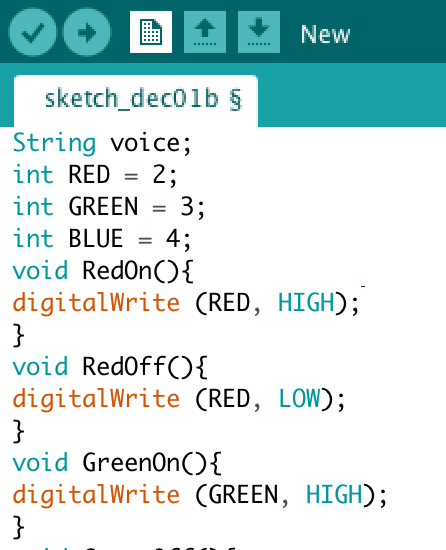
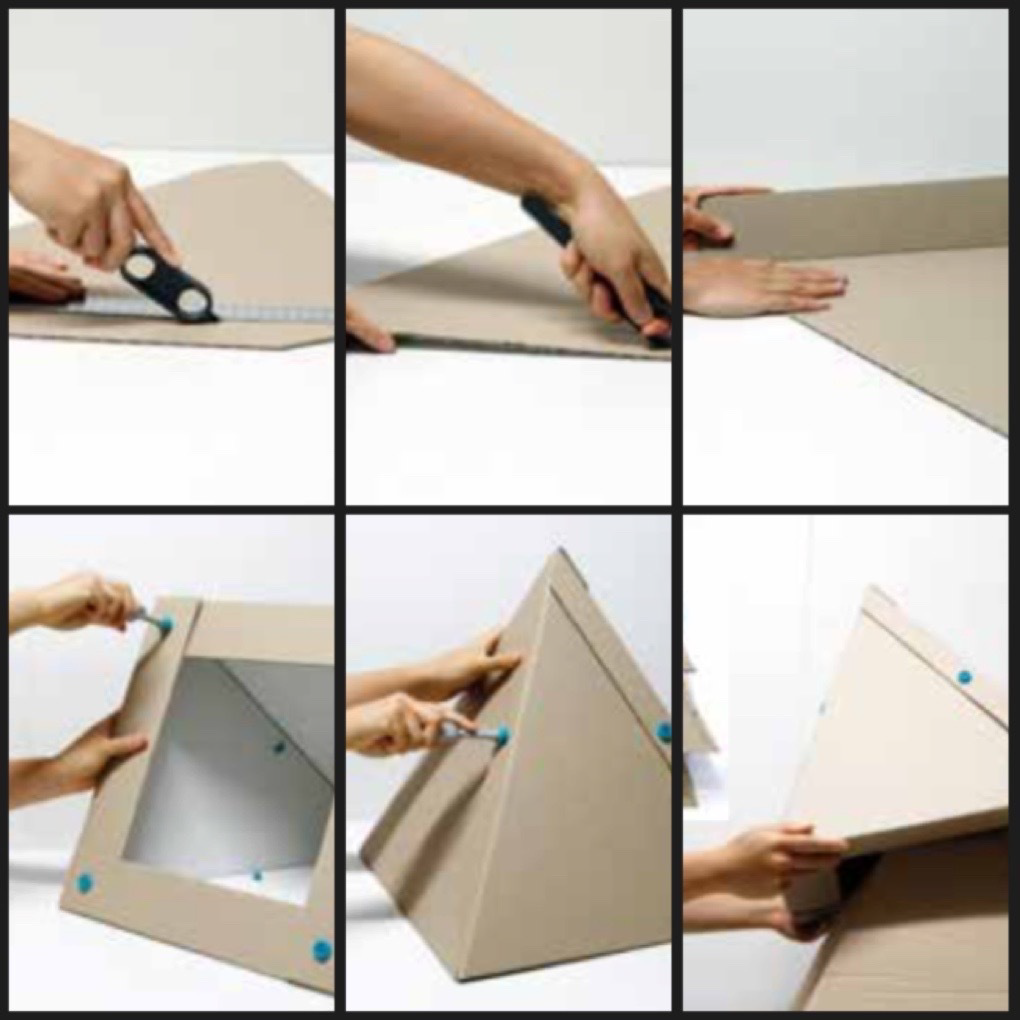
The LED strip inside the tree can show any color or pattern that can be coded. Due to themodular nature of most programs that control LEDs using the Arduino interface, code can usually be copied from similar programs with only a few variables needing to be updated (such as type and number of LEDs). Libraries can be imported into an Arduino program that make designing your own unique patterns easy as well. Steps for creating the cardboard Christmas tree. Semitransparent plastic or other materials could be used to make a decoration where the whole item glows.
There is a short delay between when a word is sung in a song, and when the program changes the light settings. This is partly due to the fact that the voice data (an analog signal) is being sent to the internet to be parsed by Google’s Speech-to-Text service, and then being downloaded back to the Google Voice Kit, where it is compared to expected phrases before a signal is sent to Arduino to update the light settings.
Why It Matters
Nowadays, the latest technology is trying to make the user comfortable enough to forget that the interactive interface really exists. Creating immersion in a particular study is a step in creating fluid interfaces between the real and virtual worlds. Therefore, because we must acquire the skills necessary to connect physical objects with digital environments in ways that are safe and effective, I think this project is important. I also believe that this project can serve as a foundation to help students to acquire the skills that they need to navigate the needs of society for more responsive objects that take advantage of available artificial intelligence and other online services.


